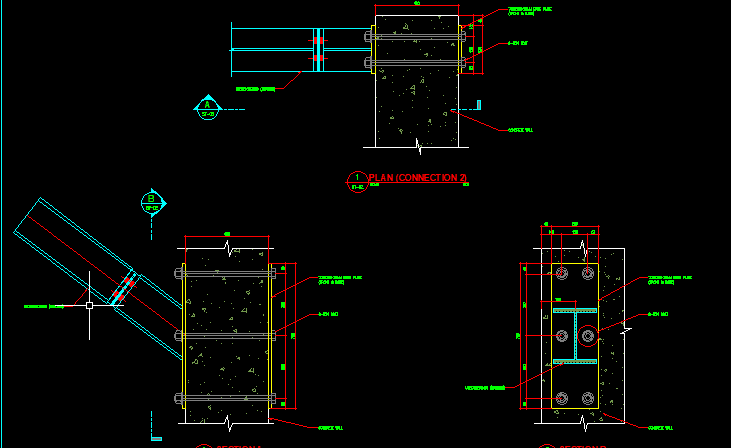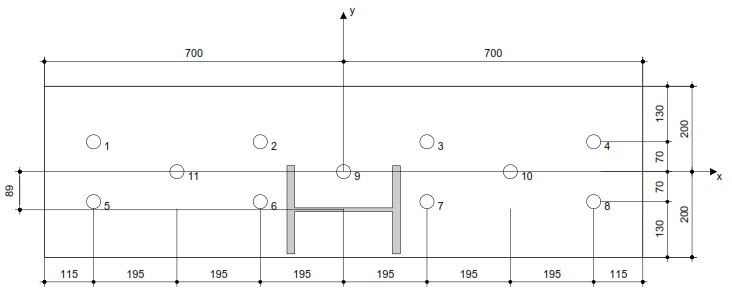canwest said:
For pryout, I think you can make the case the back side plate adds some resistance but I have no idea how to quantify it.
Some ideas:
1) Look at the usual app D frustum but consider the depth of it to be the full concrete depth. And remove the back side resistance as there's no concrete to concrete boundary there upon which to exert tension.
2) Seriously eccentric punching shear.
I like the punching shear as I can tie that back to codified stuff more cleanly.
WARose said:
Kootk, if you are reading this....what do you think?
I think the same and probably for the same reasons. In an oversized, ungrouted hole, you're not going to get that spiffy laterally loaded pile stress distribution that we simplify with 6d/8d. Instead, you're just going to lean up against the edge of the hole in a way that concentrates all of the force there. This is part of why I rarely do through bolt connections unless:
1) It's straight axial load and I deal with it as punching shear or;
2) I treat is as a pretensioned friction connection which has it's own issues.
For something like this, if it can't be done with anchor theory, I consider that to mean that it can't be done. Sure, the back side plate feels good mechanically. But we aren't able to quantify that rigorously and, conspicuously, there doesn't seem to be much testing on these kinds of connections. And if I learned one thing from appD, it's this: our instincts suck when it comes to concrete anchorage. Can't. Trust. Self.
I like to debate structural engineering theory -- a lot. If I challenge you on something, know that I'm doing so because I respect your opinion enough to either change it or adopt it.



